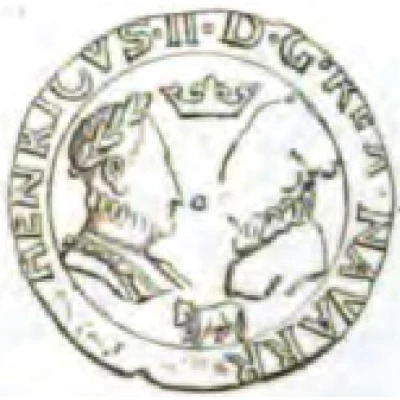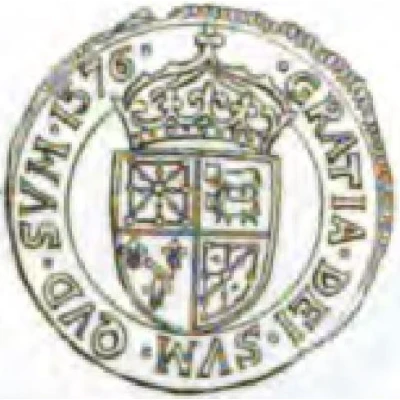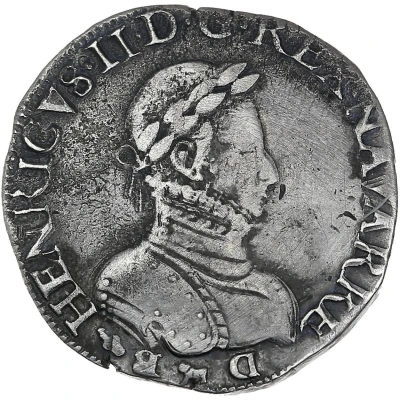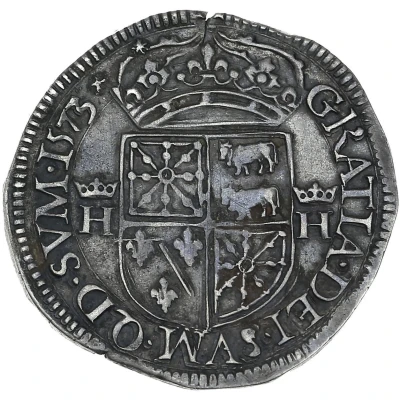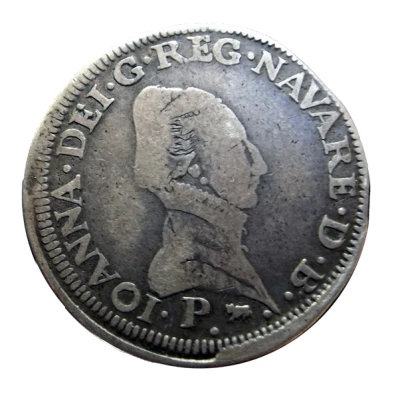
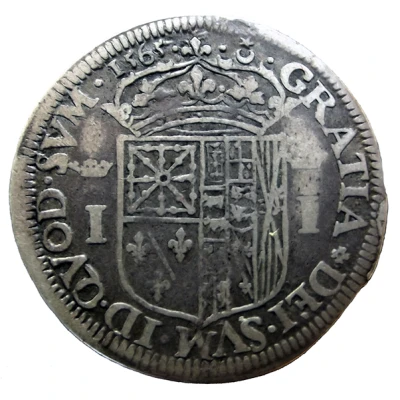

Obverse © @Tichat40
Teston - Joan of Albret
| Silver | 9.34 g | 29 mm |
| Issuer | Lordship of Béarn (French States) |
|---|---|
| Lady | Joan of Albret (1555-1572) |
| Type | Standard circulation coin |
| Years | 1564-1570 |
| Value | 1 Teston (½) |
| Currency | Livre |
| Composition | Silver |
| Weight | 9.34 g |
| Diameter | 29 mm |
| Shape | Round |
| Technique | Hammered |
| Orientation | Variable alignment ↺ |
| Demonetized | Yes |
| Updated | 2024-10-04 |
| Numista | N#184004 |
|---|---|
| Rarity index | 90% |
Reverse
Crowned shield, with crowned I on both sides.
Script: Latin
Lettering: . GRATIA ᛭ DEI . SVM . ID . QVOD . SVM . 1565 .
Translation: By the grace of god, I am what I am.
Comment
Numerous varieties :- from 1564 onwards with IOANA, IOANNA, NAVARE, NAVAR, NAVR, NAVARRE, NAVRE, GRATIA + D . SVM .
-Larger exergue cow
Testons with striated edges are less numerous than those with smooth edges.
Between 1564 and 1569, only the different crescent + star is found.
From 1570, the different DB mêlés appears instead of the crescent + star, but remains rare, probably on the last strikes of 1570.
From 1570, the General Engraver Guillaume Martin, whose difference is the star, is replaced by Jérôme Lenormand (different: acorn).
The BD is not different. The croissant is the different of the Maitre d'atelier Etienne Bergeron.
(For the teston with the second aged type, the different crescent + star has disappeared (vintages 1570 to 1572)).
Interesting fact
One interesting fact about the Teston coin featuring Joan of Albret is that it was minted during a time of great religious turmoil in France. The coin was issued by the Lordship of Béarn, which was a Protestant stronghold in southern France, and features an image of Joan of Albret, who was a Protestant queen. This coin was minted during a period of religious conflict between Catholics and Protestants in France, known as the Wars of Religion, which lasted from 1562 to 1598. Despite the religious tensions, the coin still features the traditional Catholic imagery of the time, such as the fleur-de-lis and the coat of arms of the Kingdom of France. This blending of religious symbols reflects the complex religious landscape of France during this period.
